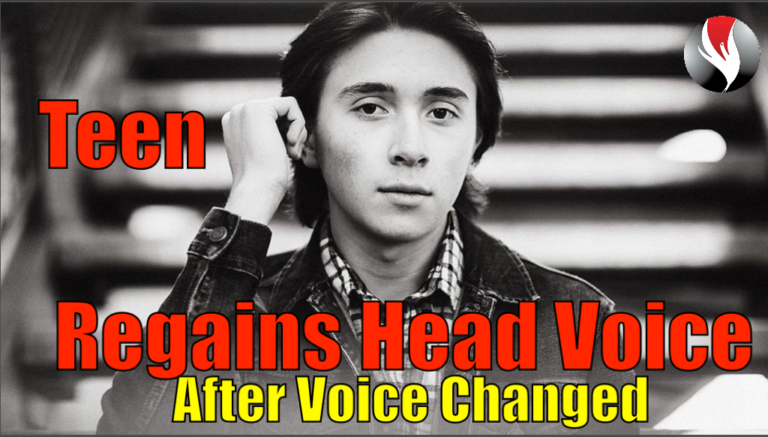Falsetto Obsession – Why There’s a Falsetto Obsession and How to Sing In Falsetto!!
There is a Falsetto Obsession. Let’s explore why there’s a falsetto obsession and how to sing in falsetto.
Hi! I’m Chuck Gilmore, International Vocal Coach and Founder of Power To Sing.
Falsetto Obsession Rap
Each week I teach you lessons in vocal technique
And this week when you finish you’ll sing falsetto not squeak
Falsetto means singing higher higher higher than a girl
But I would never say that and be taken for a squirrel
There’s something ‘bout the high notes that make you love me more
So I will sing them every time so you’ll be never bored
Falsetto is the magic key to selling songs like gold
But if you’re voice is way down low you be lucky sellin’ mold
Falsetto makes you rich and skinny running from the fans
Until they hear another singing higher than your sorry “can”
So next day you sing higher like no one did before
But then they sing like mountain birds before you’re out the door
Next day you sing higher higher higher so only dogs can hear
Falsetto obsession brings the fans that bite you in the rear.
So you don’t miss out to my channel please subscribe
Be sure and click the bell so you’ll be notified!!!!
I’d like to thank Charlie the Falsetto for his guest appearance today.
So what’s with the falsetto obsession? Vox’s youtube channel did a video on pop music’s falsetto obsession. After this video, check it out. I’ll put the link in the description below my Youtube Video. (https://youtu.be/qJT2h5uGAC0.)
Basically they found that when a lot of falsetto is used by male singers, now and in the past, they sold more songs.
Here’s why I think there’s always been a falsetto obsession.
- In the early Catholic Church, women were not permitted to sing in the choirs, so boys were castrated to maintain their soprano voices. They were known as the “Castrati” and were very popular singers. (Talk about total commitment)
Here’s an excerpt from a recording of Mr. Alessandro Moreschi, a castrato singing “Ave Maria”.
Even though castration was discontinued, the falsetto obsession has continued.
- Another reason the obsession with falsetto continues is it’s novelty. Once men’s voices change, we don’t live with that voice usually. We live down here…in our adult male chest voice. So for others to hear the falsetto voice it’s different, unusual and sometimes unique. Michael Jackson even spoke in a falsetto voice.
- A third reason for our falsetto obsession is that the high pitches excite the nervous system. There’s something within us that creates an excitement about high pitches. It’s thrilling to hear a song that finishes on a really high note. A song sung high in falsetto creates a similar excitement.
- There are probably a lot of guys like me. I always wanted to sing the high notes. For me those notes were out of reach until I learned how to connect my chest voice to my head voice. So I had “falsetto envy”…it’s real. Especially because the exciting voices and songs all seem to be up there…even if it’s just the end of the song. And the higher the voice, the more exciting it is.
So, for a bass singer like me, I always wanted to sing higher, because that’s where was found all the excitement and recognition.
- Finally, that’s where all the fun songs seem to be written. Way up high. At least that’s how they always climax on the big finish at the end…on very high notes. They’re called “money notes”, that’s what you want to be able to show in auditions…your “money note”. If you don’t have it…you don’t get cast in the dream roles.
I think the whistle voice is a similar novelty for both men and women. What do you think, ladies and gentlemen? Let me know in the comments section below this Youtube video. Is the whistle voice just a novelty or fad? Tell me “yes” or “no” in the comments below.
So the falsetto obsession perpetuates itself. I’m sure there are many other reasons.
Falsetto Obsession – Differences Between Falsetto and Head Voice
For the record, there are important differences between falsetto and head voice.
But first, the similarities.
Similarity #1. They vibrate primarily in the same place…the head cavities.
Similarity #2. Falsetto and head voice sound very similar…it’s hard to tell them apart. [demo]
Similarity #3. They often feel the same or very similar to the singer.
Similarity #4. Falsetto and head voice are usually sung on the higher pitches in songs.
Here are some differences.
Difference #1. In head voice, the vocal cords are more deeply adducted and use more of the muscle of the vocal cords to produce tone. In contrast, in falsetto, the vocal cords are barely adducted, engaging just the outer edges of the vocal cords with little to no depth of vocal cord. This is why the tone is considered a disconnected tone and why falsetto means “artificial or false voice”.
Difference #2. Because of #1 above, head voice has a broader spectrum of overtones yielding a fuller component of tone compared to falsetto tone.
Difference #3. Falsetto allows more air to escape through the vocal cords, giving it a breathier or lighter quality of sound vs head voice.
Difference #4. Falsetto will not blend into chest voice without reestablishing a feeling of connection to chest. If feels as if you must break back into chest with a clunky reentry into chest voice. In contrast, head voice blends smoothly into chest voice.
Difference #5. Years of singing in falsetto increases the likelihood you’ll develop a wobble in your voice. Head voice, which engages more of the muscle of the vocal cords, helps the vocal cords stay conditioned. Like any muscle, if you don’t use it, you lose it.
Major confusion exists between falsetto and head voice because many, many people refer to all high notes as “falsetto”. They use head voice and falsetto interchangeably and mean the same thing… singing high pitches.
Here’s how you sing in falsetto. It’s like a yodel. [demo] Doesn’t that feel like a disconnected tone? Then you keep singing in the disconnected feeling. [Demo]
If you can’t just disconnect, try this. Go from a very open [ae] sound like “cat” and sing up the scale and quickly transition to [u]: [ae……..ae] [u] [u] [u] [u] . When you transition suddenly to [u] you can sometimes break into falsetto.
Here’s one way to sing in head voice. On the same pitches sing: “ney” medium loud…not too hard but with an exaggerated puppet or witchy voice. [demo Octave repeat] Try and maintain the feeling of the connected tone.
To learn more about falsetto vs head voice watch this video. I’ll put it on the end screen for you for you to watch at the end of this video. In this video you will see video footage of the vocal cords as they let go from a connected tone to a disconnected tone. It’ll help you satiate your falsetto obsession.
To help you have complete control of your voice so you can choose to sing head voice or falsetto,
you must learn how to bridge into your head voice through your break area.
You must do exercises for your vocal type. Your vocal type describes how you sing through the break area of your voice…which is called the bridge.
Follow these steps:
One. Download this PDF, Get Your Vocal Type. Get it here or in the description below this Youtube video.
Two. Follow the links on the PDF and take the vocal test. The vocal test will help you discover your vocal type. Your vocal type describes what you tend to do when you sing through the bridge.
Three. Watch the videos about your vocal type and watch demonstrations of exercises for your vocal type, so you can get faster results.
Four. Download the exercises for your vocal type and start practicing them. These exercises, designed for your vocal type, will help you make immediate improvement with your singing voice and make these 3 tricks easier for you to do.
Mastering these exercises will give you control over your voice so you can choose to sing in a powerful head voice or use falsetto when you want. If you can ONLY sing falsetto, you are limited. You want to have the technical skill to choose how you sing.
IF YOU LIKED THIS VIDEO, PLEASE GIVE IT A THUMBS UP, SUBSCRIBE, AND SHARE IT WITH A FRIEND.
Also, to join a community of singers just like you, I invite you to join my Facebook page, Power To Sing, where I share up to date singing advice to help you succeed with your voice.
In addition, be sure to join me on Twitter and Instagram @powertosing.
I’m Chuck Gilmore with Power to Sing. You can sing higher with beauty, confidence and power.
I’ll see you inside the next video.








Responses